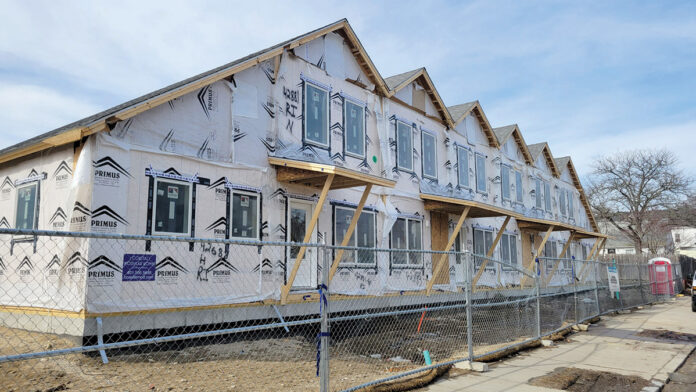Rhode Island has received $1.1 billion in federal money from the American Rescue Plan Act, passed in response to the economic effects of the COVID-19 pandemic. Of that, $250 million is allocated for housing, particularly affordable housing.
The Housing Network of Rhode Island, a Pawtucket-based state association of 17 nonprofit housing developers, cites a report from the National Low Income Housing Coalition that Rhode Island has a deficit of about 24,000 homes for extremely low-income renters, an 11% increase over 2021. (Area median income for an extremely low-income household of three is $26,500.)
Colin Penney, executive director for South County Habitat for Humanity Inc., says that extremely low-income families only represent a subset of the larger problem. Many Rhode Island families with somewhat higher incomes are also unable to afford housing.
Penney says that for six prospective houses, Habitat receives about 150 applications.
Asked how much it would cost to completely eliminate Rhode Island’s housing issue, affordable housing advocates say billions. Just how many billions, no one could say. But they say it’s foolish to contemplate that kind of spending without a comprehensive statewide plan.
“$250 million is significant,” HNRI Executive Director Melina Lodge said. It has an opportunity to be transformational. But we try to be very clear that this is a down payment, not an endpoint.”
Housing finance is a complex business. For one thing, numbers are always changing as population, costs and the economy evolve. Construction costs, for example, went up 40% since January 2020, according to the National Association of Home Builders.
Brenda Clement, director of HousingWorks RI, a statewide source of housing data based at Roger Williams University, says most nonprofit housing organizations use between four and 10 funding sources for their projects, including other federal programs, low-interest loans, tax credits and more.
Private philanthropy is another source of revenue for housing nonprofits.
Crossroads Rhode Island, for example, raised or earned about $22 million in 2021. Of that, about $4 million, or 18%, came from contributions, fundraising events and in-kind donations.
South County Habitat for Humanity has a $1.7 million annual budget. Much of it comes from corporate and individual donations of either cash, material or labor. (Habitat operating expenses are paid by profits from a thrift store at 1555 Shannock Road in Charlestown.)
Individual donors make small cash donations or volunteer to come out to a building site and swing a hammer. (That includes the new homeowners, who are required to put in between 200 and 400 hours of time on their own houses.)
The $250 million in ARPA money will be distributed over three fiscal years and won’t all go toward pouring foundations and building walls. Money is allocated for site acquisition, predevelopment and development of affordable and middle-income housing, which will create about 1,500 housing units, according to the R.I. Office of Housing and Community Development.
But there is also funding to give down-payment assistance for first-time buyers, to address homelessness in the state and to develop that badly needed comprehensive state housing plan.
Affordable housing advocates also cite as obstacles the high cost of land in Rhode Island, plus different land use policies in 39 cities and towns, each with its own priorities. Many municipalities, Lodge says, oppose multifamily housing units.
“Historically, zoning has been used to protect the interests of property owners who want their property to retain its value,” R.I. Housing Secretary Josh Saal said. “We need to think hard whether we want to be a state that can keep everything the same … paradoxically, for some things to stay the same, some things also have to change.”
Affordable housing advocates are cautiously optimistic that the state is finally taking housing seriously.
“I do think it’s a higher priority; now we need the actions,” Rhode Island Foundation CEO and President Neil D. Steinberg said. “We’ve all spent a lot of time brainstorming, saying if we only had the money, we could do this or we could do that. This is the first time in my memory that we’ve had the money first.”













